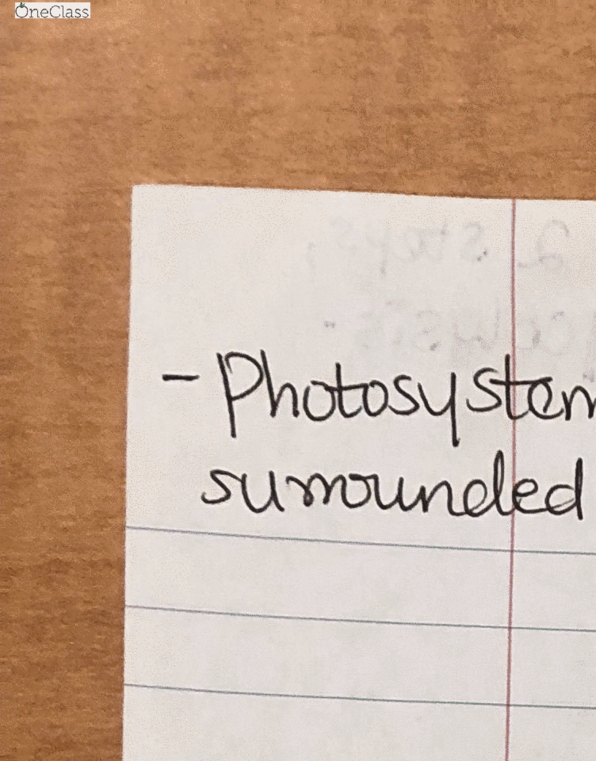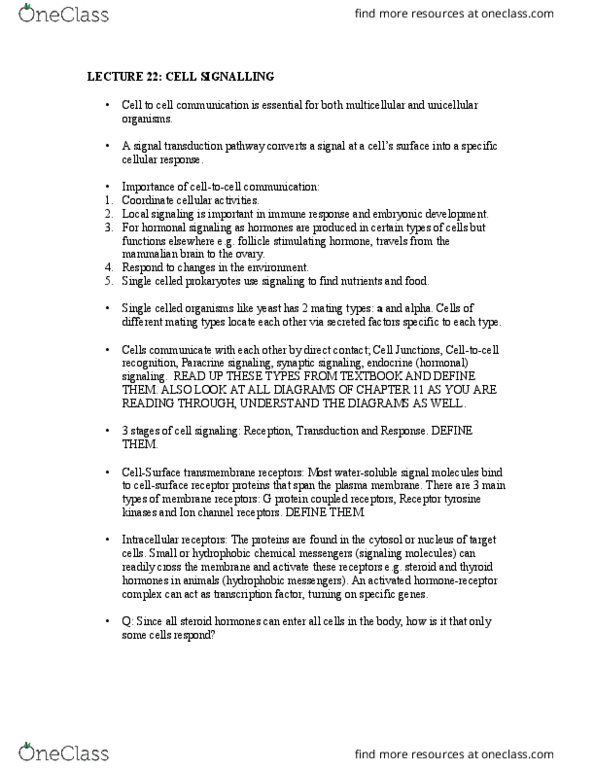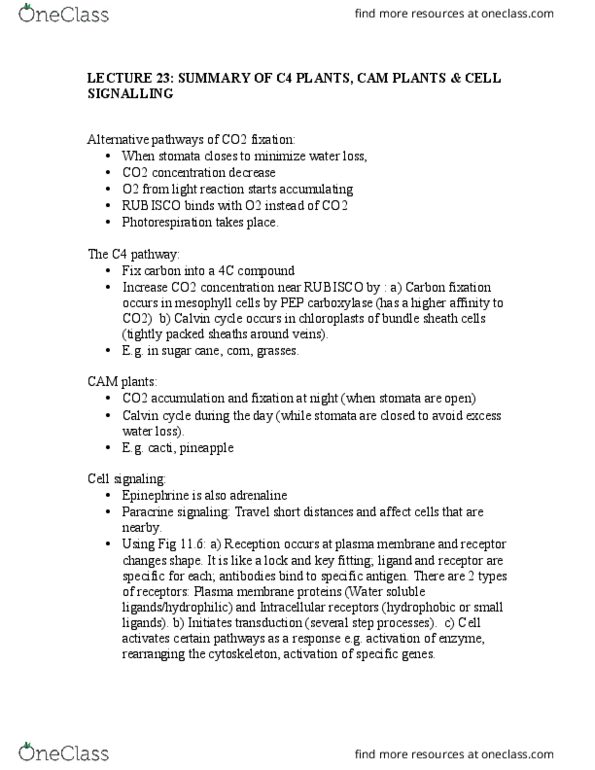BIOL 1020 Lecture Notes - Lecture 22: G Protein–Coupled Receptor, Paracrine Signalling, Signal Transduction
BIOL 1020 verified notes
22/23View all
Document Summary
Lecture 22: cell signalling: cell to cell communication is essential for both multicellular and unicellular organisms, a signal transduction pathway converts a signal at a cell"s surface into a specific cellular response. Cells of different mating types locate each other via secreted factors specific to each type: cells communicate with each other by direct contact; cell junctions, cell-to-cell recognition, paracrine signaling, synaptic signaling, endocrine (hormonal) signaling. Read up these types from textbook and define. Also look at all diagrams of chapter 11 as you are. Reading through, understand the diagrams as well: 3 stages of cell signaling: reception, transduction and response. Them: cell-surface transmembrane receptors: most water-soluble signal molecules bind to cell-surface receptor proteins that span the plasma membrane. There are 3 main types of membrane receptors: g protein coupled receptors, receptor tyrosine kinases and ion channel receptors. Intracellular receptors: the proteins are found in the cytosol or nucleus of target cells.





